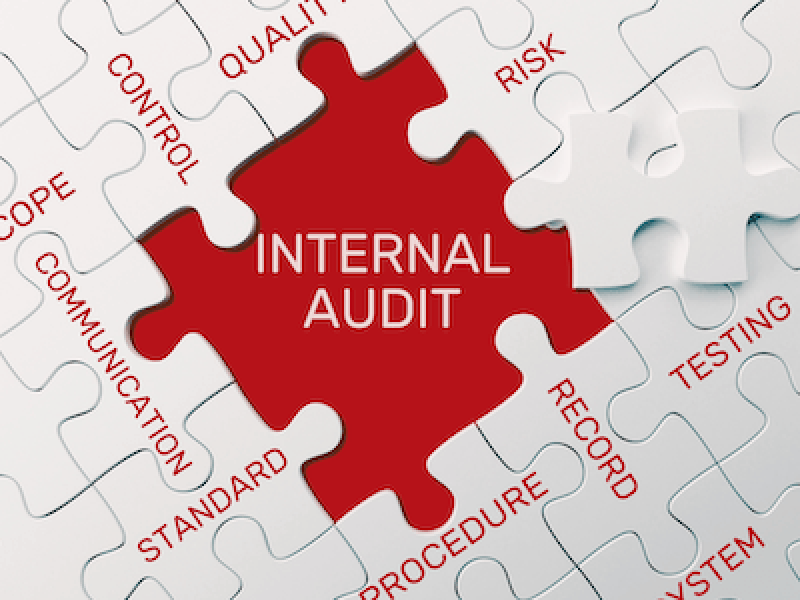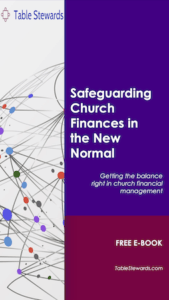Introduction
So why is bank reconciliation a must for safeguarding church finances?
Knowing the balance of funds available for operations is a necessary part of due diligence in an organisation.
Just checking the bank balance is not sufficient as there are many reasons why the balance at bank may not represent the true balance available e.g. unpresented cheques.
Similarly the accounting records of bank transactions, known in accounting terms as the cash book, may have a balance that does not reflect the real funds available e.g. due to unrecorded interest income.
How then is the real balance determined?
A simple exercise of checking the transactions in the bank statement against the accounting records, making due corrections and investigating discrepancies to reconcile the difference, not only confirms real balances but also serves as a strong detective control over church finances.
This article takes you through what a bank reconciliation is, how to carry it out, its strengths and limitations, roles and responsibilities.
Table Stewards uses a light-hearted scene setting approach to introduce its topics, but if you would prefer to dive straight into any part of the article, please click the relevant link in the table of contents above.
Scene Setting
It is a sunny Saturday and the Learning & Development Committee (LDC) are due to have their pre-meeting with Coach Emmanuel before the masterclass.
Brother Sam: “Good morning Sister Mary. I see you came in really early today. Don’t tell me that you drove in that brand new silver Lexus that I parked next to in the car park?”
Sister Mary: “Hello Brother Sam. I came in early to finish off the collation of questions for our meeting today. By the way, the brand new car belongs to Leader Badtrus. He is in a short meeting with his finance committee but should finish just before the masterclass.”
Brother Sam: “Wow! I must congratulate him. That car is a real “beast”, if I may say so!”
Sister Mary: “I am surprised at your enthusiasm, Brother Sam. Can’t you connect the dots? Leader Badtrus only started banking the church money 3 months ago, now he has a brand new car!”
Brother Sam: “Sister Mary! You shouldn’t think that way. Leader Badtrus is of impeccable character. Anyway, here comes Coach Emmanuel who I hope can also testify of Leader Badtrus’ character.”
Coach Emmanuel: “Hey guys! Did I hear you mention my name?”
Brother Sam: “We were commenting on Leader Badtrus’ new silver Lexus. You must have seen it in the car park.”
Coach Emmanuel: “Yes, what an amazing looking car. I can’t wait to congratulate him and have a test drive! Sister Mary – you gave me a disgusting look when I said that – what is the matter?”
Sister Mary: “Coach Emmanuel, like I was saying to Brother Sam, can’t you guys connect the dots between Leader Badtrus buying a new car and him taking responsibility for banking the church money?”
Coach Emmanuel and Brother Sam: “Sister Mary!!!”
Brother Sam: “I was saying to Sister Mary that Leader Badtrus is of impeccable character and cannot misappropriate church money.”
Coach Emmanuel: “Sister Mary and Brother Sam. Our assurance that church money is fully accounted for and cannot be misappropriated by Leader Badtrus should not be based only on his character but on the implementation of sound controls. I know we have sound internal controls in place so I have every assurance that Leader Badtrus’ new car has nothing to do with church money.”
Sister Mary: “What do you mean and how can you be so sure?”
Coach Emmanuel: “Here comes Sister Jane. I think we already have our topic for the masterclass today. We will be exploring what can make us sure that church money is not being misappropriated. It is called Bank Reconciliation”
Sister Jane: “That sounds like a fantastic topic. I can’t wait to learn what Coach Emmanuel has to say about it. Let’s start the masterclass!
What is Bank Reconciliation?
Bank Reconciliation is the process whereby you check (i.e. reconcile) the bank statement against the church records of income collected and banked, as well as authorised expenditure, and identify corrections to be made, or anomalies for investigation.
How is a bank reconciliation carried out and evidenced?
A bank reconciliation can be carried out digitally using the bank reconciliation functionality in accounting software.
Typically this involves matching transactions within the bank records on the accounting system with the transactions on the bank statement.
Alternatively, a manual bank reconciliation will involve checking each line in the bank statement and comparing with the bank records on the accounting system.
A bank reconciliation must be carried out for each of the bank accounts that the church has.
Matched items are ticked off and the unmatched items are reviewed to identify the action to take for each, as described below.
The bank statement may contain transactions that represent direct transactional activity such as members donating by direct transfer to the church bank account, or the periodic merchant receipts from card paying donors.
These will need to be recorded in the accounting system as a by-product of the bank reconciliation.
Direct transactional activity such as these direct bank credits, have no human intervention risks between donor payment and the almost immediate bank recording.
They can therefore be added into the accounting system during the bank reconciliation exercise.
Bank interest and bank charges will also appear first on the bank statement before you record them in the accounting records.
A bank reconciliation statement is then prepared on a spreadsheet or manual record setting out the balances and itemising the discrepancies, specifying the actions required to reconcile both balances.
So, what is a bank reconciliation statement?
Bank Reconciliation Statement Example
A bank reconciliation statement is defined as “a statement prepared by the entity as part of the reconciliation process, which sets out the entries which have caused the difference between the two balances.
It would, for example, list outstanding cheques (i.e., issued cheques that have still not been presented at the bank for payment)”.
Having made the adjustments to the accounting records to reflect genuine transactions in the bank statement not reflected in the accounting records such as bank charges and interest income, the remaining unmatched items are presented in the bank reconciliation statement.
This shows the make-up of the difference between the bank balance and the accounting records or cash book.
Here is a simple example:
| Bank Reconciliation Statement as at 31 March 202n | £ | Notes |
| Bank Statement Balance | 556,890 | |
| Add: [items that will increase the Bank statement balance]
Deposits in transit: – Income from church services on 31 March
|
78,950 |
Subsequently banked on 1 April |
| Deduct: [items that will decrease the Bank statement balance]
– Unpresented Cheques
|
60,000
|
This is made up of 3 cheques. (see details in linked schedule) |
| Other Adjustments (+ or -)
|
0 | |
| Accounting Records (Cash Book) Balance | 575,840 | |
| Unreconciled Difference | 0 |
Whichever way the bank reconciliation is carried out, it is important that a second, usually more experienced person, reviews the bank reconciliation statement and approves it.
The reconciling items identified are then followed up in the next bank reconciliation to check whether the cheques have subsequently cleared and the income in transit was banked intact.
What are the prerequisites for a good Bank Reconciliation?
For Bank Reconciliations to be effective, you must have good controls over income and expenditure, including record keeping.
Income should always be banked intact, i.e. donations counted, bagged and banked without taking out any part for any purpose, such as expenses.
There should be evidence from the bank such as stamped bank tellers showing the amount banked and date.
The income received and banked should also be recorded in the accounting system for bookkeeping purposes.
Expenditure should have a standard authorisation process and documentation that shows the date, amount, items purchased, financial authorisation, supporting documentation, and payment information.
All expenditure must be recorded in the accounting system for bookkeeping purposes.
With appropriate records of income and expenditure, the bank statement can be ticked off against the records, updates made for items such as bank charges and interest income, and then any other discrepancies can be noted for further investigation.
How does bank reconciliation help with investigating discrepancies?
If for example, there is no supporting record for an item of expenditure in the bank statement, the means of payment can be explored.
Was it a cheque? In which case the cheque number should be on the bank statement. The custodian of the cheque book can then be asked to explain.
Was it paid by bank transfer to a payee? Then the person who has the authority to make transfers should be asked to explain.
Was it a direct debit transaction? Then the bank signatories who have the authority to approve direct debit mandates should be asked to explain.
Was it a bank card transaction? Then the cardholder should be asked to explain.
Was the income for a particular service day not showing on the bank statement? Then the bank tellers should be reviewed to eliminate bank error.
Or if there is no evidence of banking, then the person charged with banking should be asked to explain.
What are the disadvantages of Bank Reconciliations as an internal control?
Bank reconciliations detect events after they have occurred. It does not directly prevent errors or unauthorised activity, but can help detect them when they occur.
That said, it can also be a deterrent. The knowledge that the bank statement is reconciled against approved transactions and income received, can deter attempts to misappropriate funds.
Best practice is to carry out regular bank reconciliations, such as daily (for large churches with lots of transactions) or weekly (for most others).
With facilities available to access bank accounts on demand, coupled with the ability to download bank statements to accounting software for online bank reconciliation, there is no reason to wait until month-end.
Nevertheless, the month-end reconciliation is important as this ensures that the accounting records are complete before the accounting period is closed.
Whose responsibility is it to do the bank reconciliations and how often should they be done?
The finance department is responsible for maintaining the accounting system (books and records) of the church and should carry out the bank reconciliation.
The person who prepares the bank reconciliation should not have responsibility for recording transactions on the accounting system.
A separate person should also review and approve the completed bank reconciliation.
This separation of duties should help mitigate against conflict of interest in identifying discrepancies.
The bank reconciliation should be done at the very least, monthly, before rolling over from one accounting period to another.
Most accounting software packages allow ongoing bank reconciliation, which enables daily or weekly reconciliations, but the month-end reconciliation remains a significant control.
Segregation of duties as described above should help maintain integrity of the bank reconciliation.
The Bank reconciliation statement or system report evidencing that it has been successfully completed, should also be provided to the finance committee or other governance body responsible for financial oversight, along with the management accounts.
Conclusion
The internal control of bank reconciliation helps provide assurance that income is banked intact and expenditure is authorised.
Bank reconciliations also help identify unauthorised transactions, and errors in accounting records or in banking.
Coupled with good internal controls over income and expenditure, regular bank reconciliations provide a powerful internal control over church finances.
Also read more on why churches need good internal controls; how segregation of duties protects church finances; and why risk management is necessary in churches and charities.








